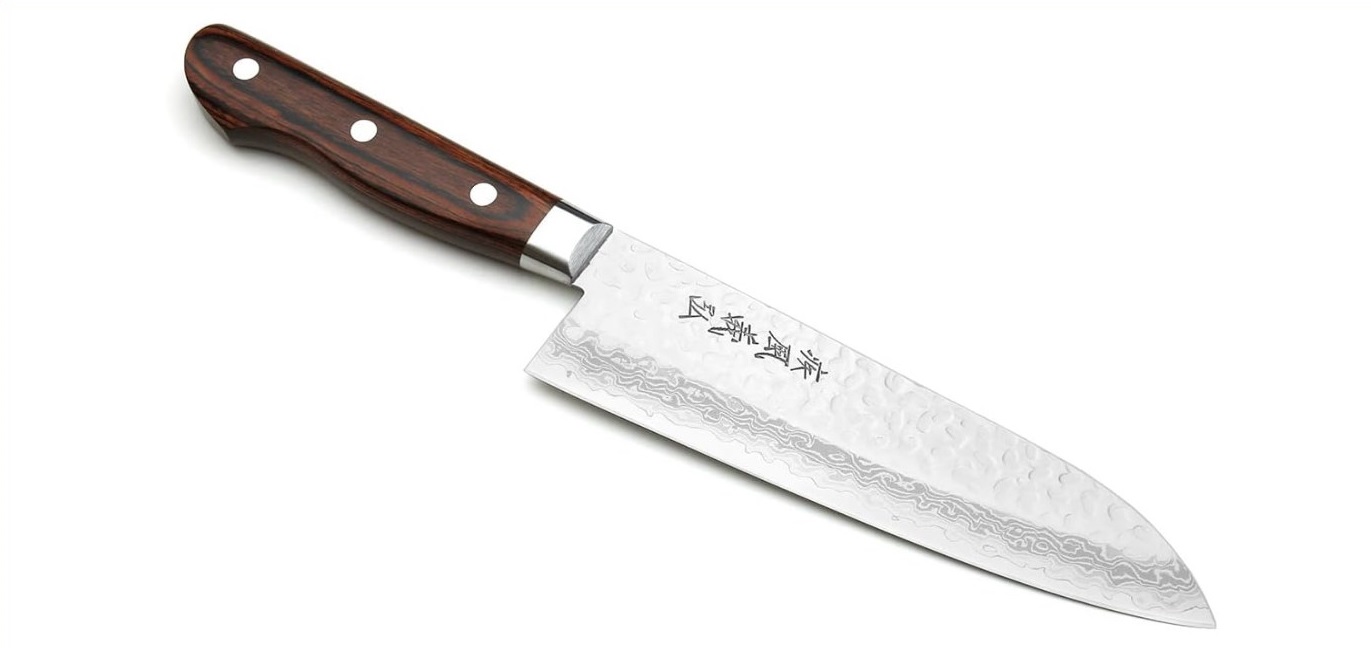The chef knife vs santoku debate is one steeped in culinary tradition and practical application. Both knives have their legions of loyal followers, and for good reason. The chef knife, known for its versatility, is a staple in Western kitchens, suitable for a range of tasks from slicing to dicing. Meanwhile, the santoku, with its Japanese roots, excels in precision cutting, particularly for vegetables and fish. But which one truly deserves a spot in your kitchen?
The bustling world of culinary artistry witnesses an eternal debate in kitchens: the choice between the Western-style chef’s knife and the Japanese-style Santoku knife. Both represent multipurpose mastery, but each carries its own flair and technique, setting them apart. Let’s delve deeper into this cutlery conundrum.
Understanding the Chef Knife vs The Santoku Knife
At a glance, both these knives might seem like every chef’s dream tool, adept at multiple culinary tasks. However, the subtle differences in their design and the consequent techniques they demand make all the difference.
What is a Chef Knife?
Originating from the West, the chef’s knife is often the crown jewel of the kitchen. Here’s why:
Design: Crafted especially for the “pinch grip,” this knife boasts a double bevel blade ranging between 8 to 12 inches. A bolster ensures the chef’s fingers remain secure.
Cutting Edge: The knife is characterized by a pronounced curve, known as the “belly,” facilitating the renowned “rock-chop” method.
Uses: A master at multiple tasks, this knife shines when it comes to slicing, dicing, and mincing. Whether it’s carving through meat and bones or handling dense vegetables, the chef’s knife has got you covered. Precision tasks, such as scoring meat or trimming fat, are effortlessly executed. Some chefs even use its flat to crush ingredients, like garlic.
What is a Santoku Knife?
The Santoku, a gift from Japan to the culinary world, translates to “three virtues,” hinting at its versatility.
Design:Lighter and compact, it showcases a blade of 6-7 inches, distinguished by its flat cutting edge and curved tip.
Unique Edge: A signature “Granton” or “scalloped” edge design features indentations, preventing ingredients from sticking and ensuring a seamless chop.
Uses:Whether you’re slicing fish for sushi, preparing veggies for a ratatouille, or chopping delicate herbs, the Santoku knife promises precision. The knife’s width also proves advantageous for transferring ingredients.
When to Use a Santoku vs. a Chef’s Knife
Navigating between these two can be challenging. However, certain tasks might favor one over the other:
Chef’s Knife: With its robust design, it’s the go-to for heavy-duty tasks, making easy work of meats and dense veggies.
Santoku Knife: For those delicate slices or uniform dices, especially fish, the Santoku proves invaluable.
Choice also plays a part; individuals with smaller hands might lean towards the Santoku for its manageability, while the heft of the chef’s knife might appeal to others.
FAQs
1. What is the primary difference between a chef knife and a santoku?
A chef knife, traditionally a Western staple, has a curved blade suitable for rocking back and forth on the cutting board. In contrast, the santoku, originating from Japan, features a flatter blade with a slight curve and is more suitable for an up-and-down chopping motion.
2. Is one better than the other for specific tasks?
It largely depends on preference. A chef knife is versatile and can handle a wide range of tasks, from mincing herbs to slicing meat. The santoku is designed for precision and excels in tasks like slicing vegetables or fish with its thinner blade.
3. How does the edge sharpness compare between the two?
Both knives can be exceptionally sharp. However, santoku knives are often sharpened to a finer angle, typically around 15 degrees per side, while chef knives hover around 20 degrees. This means the santoku might feel sharper but might also be slightly more fragile.
4. Are there different types of santoku knives?
Yes. While the traditional santoku features a double bevel (sharpened on both sides), there’s also the single-beveled version which is even sharper but requires a more skilled hand.
5. How do I decide which one is right for me?
It boils down to personal preference and the tasks you often perform. If you appreciate a versatile all-rounder, a chef knife might be best. However, if precision and thin slicing are priorities, you might lean towards a santoku.
6. Is maintenance different for each knife?
Both knives require regular honing and occasional sharpening. Due to the finer edge of the santoku, it might need careful handling to prevent chipping. Always use a soft cutting board, and avoid using the blade on hard materials.
Conclusion
The chef’s knife and the Santoku knife, each an epitome of culinary craftsmanship, are indispensable in their own right. Choosing between them often boils down to personal preference and the specific culinary challenge at hand. For the avid chef, having both in their armory is a boon, just as showcased in the exquisite sets from F.N. Sharp.
With the right knife, every culinary journey becomes an adventure, and every dish, a masterpiece.
In the event that you found this article to be beneficial, I would like to recommend a few of our other articles that might be of further assistance to you:

Martin Flowers, a culinary enthusiast and innovator, spearheaded the creation of Best Knife For Chopping Vegetables. With a passion for precision in the kitchen, Martin recognized the need for a dedicated platform to guide chefs and home cooks alike. His expertise in cutlery, combined with a fervor for culinary arts, has made his website the go-to resource for knife enthusiasts. Whether you’re a professional chef or just starting out, Martin’s commitment ensures you have the best tool in hand.
